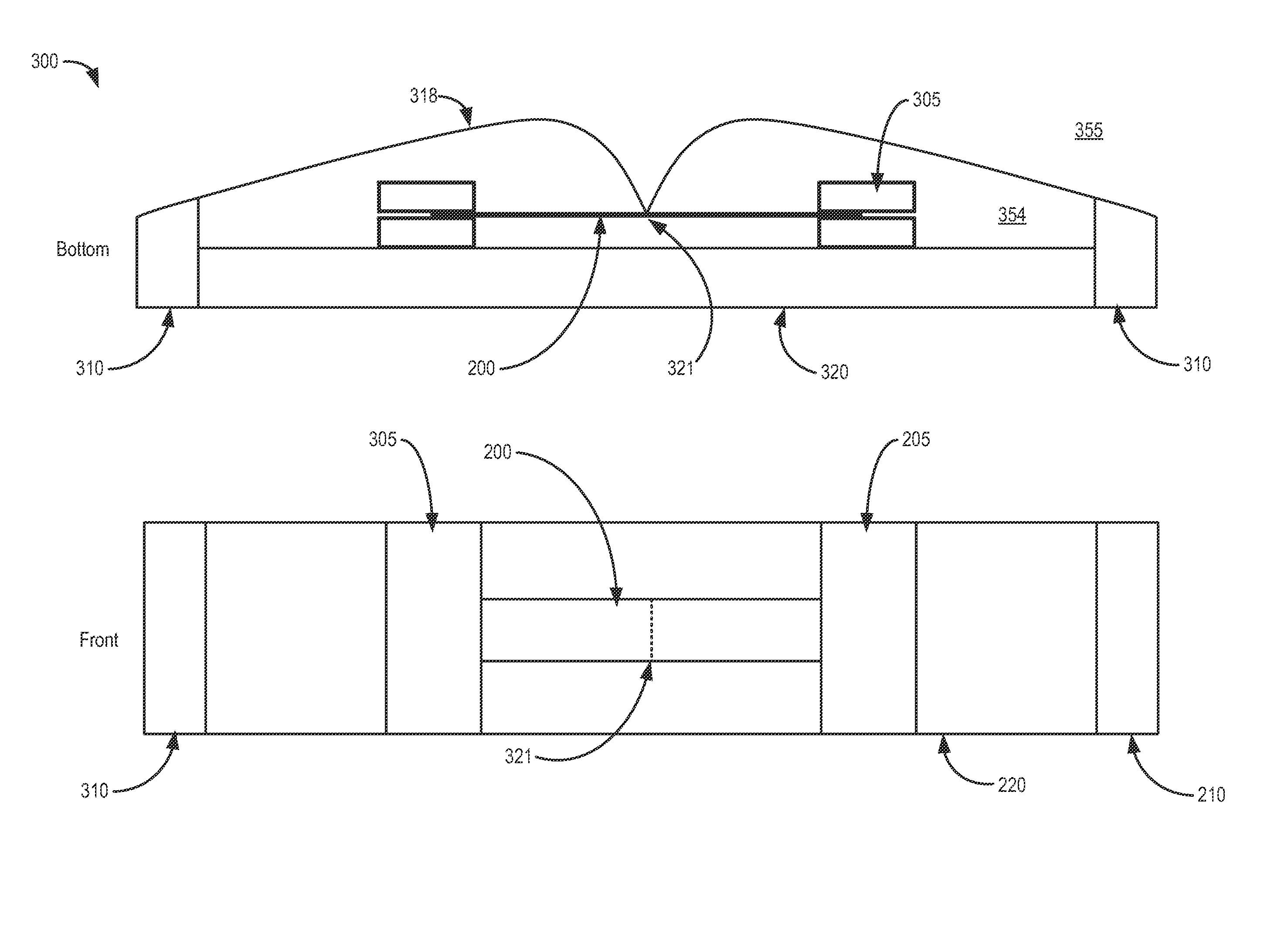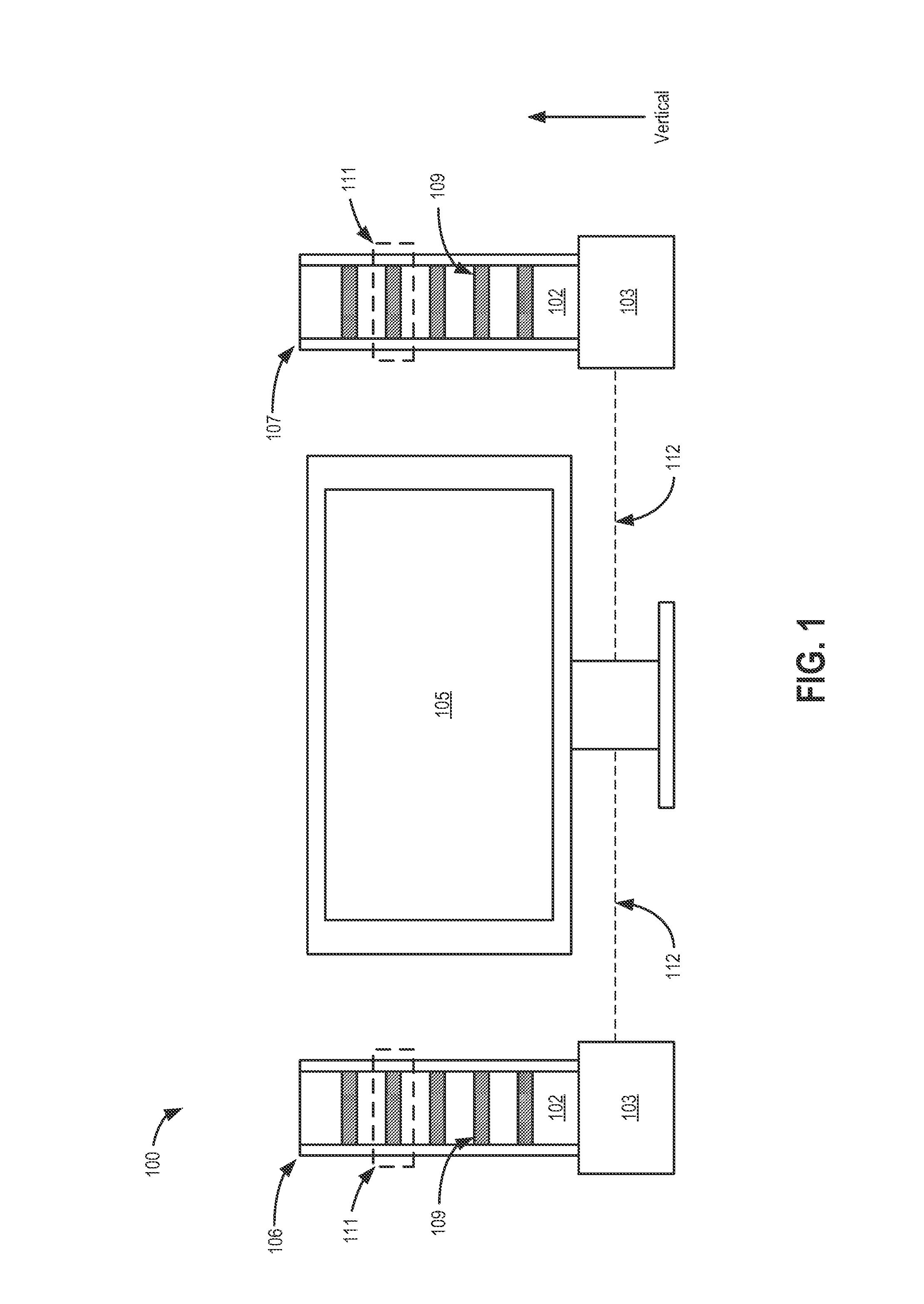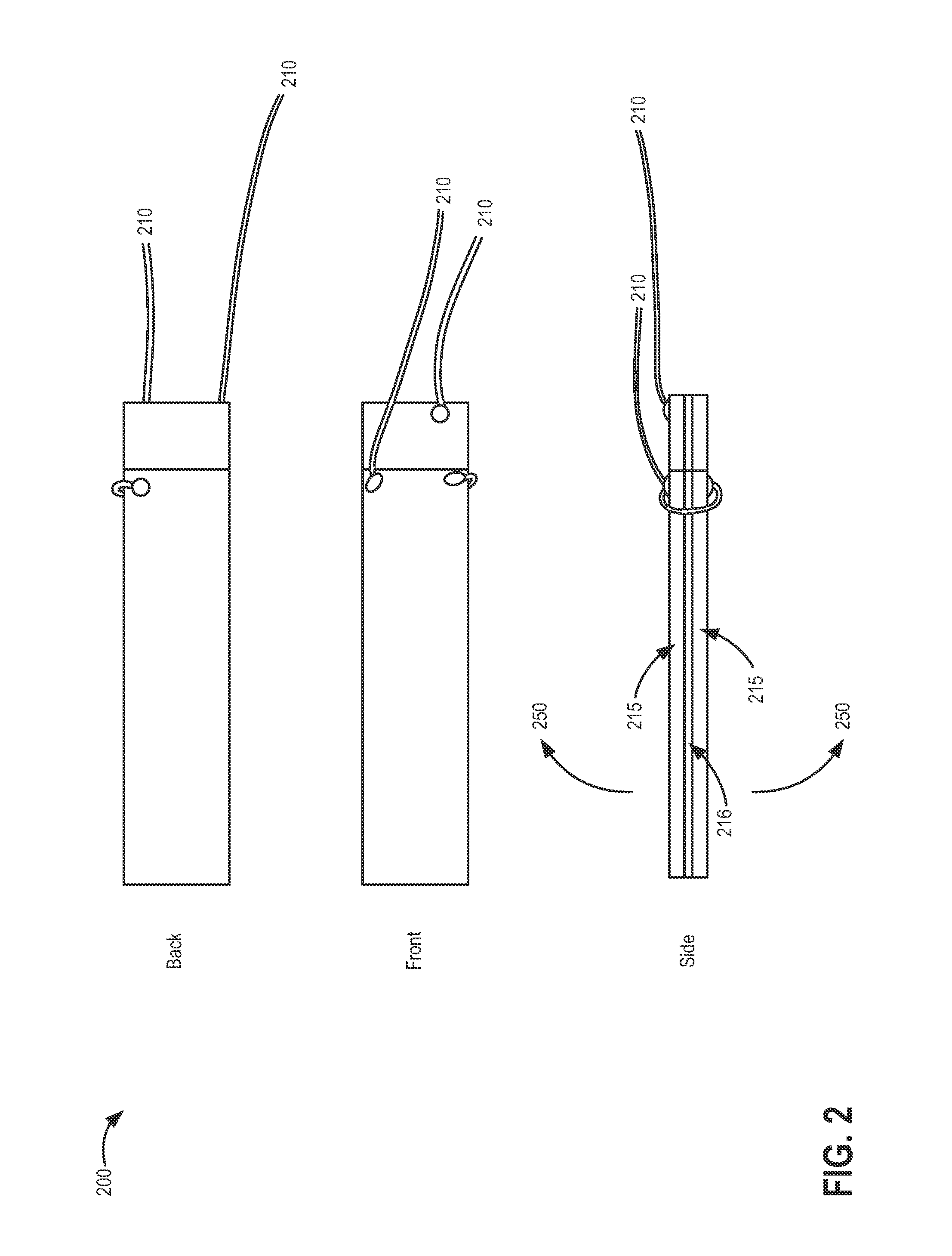Loudspeaker with piezoelectric elements
a piezoelectric element and loudspeaker technology, applied in the direction of electrical transducers, electrical transducers, transducer types, etc., can solve the problems of increasing the size, weight, and cost of the associated loudspeaker, and reducing the power efficiency of the amplifier, so as to reduce the weight and cost, reduce the cost of the amplifier, and eliminate the effect of bulky magnets
- Summary
- Abstract
- Description
- Claims
- Application Information
AI Technical Summary
Benefits of technology
Problems solved by technology
Method used
Image
Examples
first embodiment
[0028]As opposed to rigidly fixing one end of a bimorph actuator, sound quality may be enhanced by fixing the bimorph on both ends and allowing the bimorph to move in between the two fixed ends. a single element 300 of a piezoelectric speaker is shown in FIG. 3, where the element is fixed on both ends. Two views of element 300 are shown, including a front view and a bottom view, as labeled. Throughout this description, the piezoelectric element 300 forms the basis for any speaker system described. A plurality of elements 300 may be combined and arranged to form element arrays that may be wired to produce coherent sound. As seen, a bimorph 200 is clasped on both ends by grips 305 (e.g., each grip being attached to a different, opposing end of the bimorph 200). While the bimorph 200 illustrated in FIG. 3 corresponds to the bimorph 200 of FIG. 2, it is to be understood that any suitable piezoelectric actuator may be utilized where bimorph 200 is referenced in the disclosure. The grips ...
second embodiment
[0043]a piezoelectric loudspeaker is shown in FIG. 14, illustrated as a wiring scheme with various electrical elements. As opposed to loudspeaker 1000 that directs the mid-high frequencies to five bimorph actuators 200, speaker 1400 divides the five actuators such that one handles all high frequency sounds in a high-frequency circuit 1495 while the other four handle the low frequency sounds in a low-frequency circuit 1490. An incoming audio signal from external audio source 1481 is separated into two bands by the frequency-dividing network of a crossover 1483. One band may contain the low frequency signal while the other band may contain the high frequency signal, where the division between low and high frequencies is relative depending on a pre-determined frequency. As an example, one band (low band) may comprise frequencies ranging from 200 Hz to 2 kHz, while the second band (high band) may comprise frequencies ranging from 2 kHz to 20 kHz. In this case, 2 kHz would be the pre-det...
PUM
 Login to View More
Login to View More Abstract
Description
Claims
Application Information
 Login to View More
Login to View More - R&D
- Intellectual Property
- Life Sciences
- Materials
- Tech Scout
- Unparalleled Data Quality
- Higher Quality Content
- 60% Fewer Hallucinations
Browse by: Latest US Patents, China's latest patents, Technical Efficacy Thesaurus, Application Domain, Technology Topic, Popular Technical Reports.
© 2025 PatSnap. All rights reserved.Legal|Privacy policy|Modern Slavery Act Transparency Statement|Sitemap|About US| Contact US: help@patsnap.com



